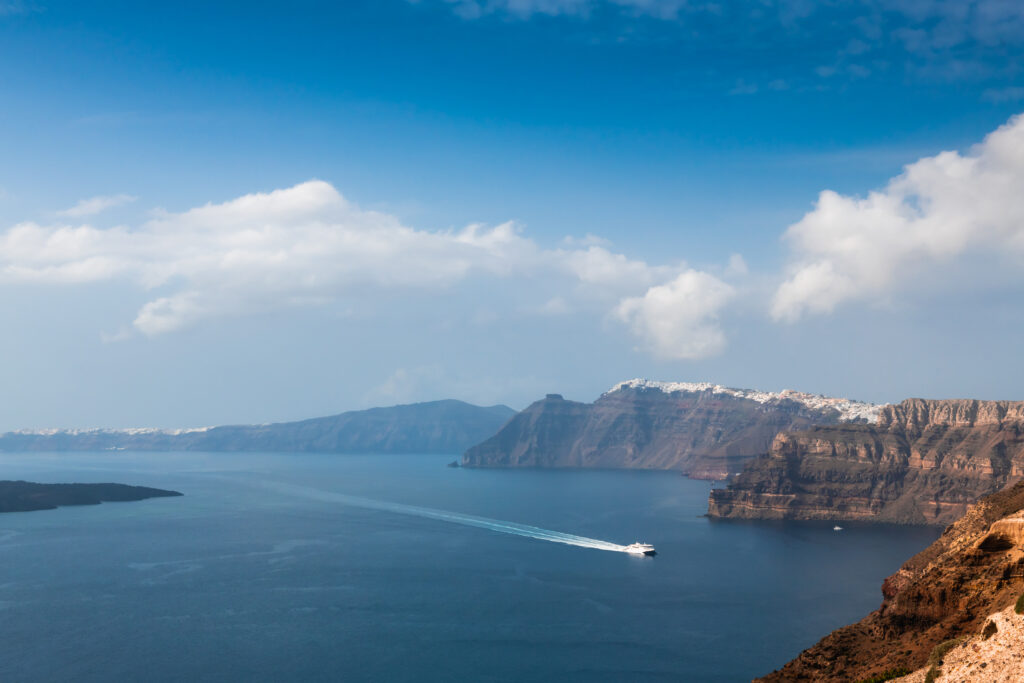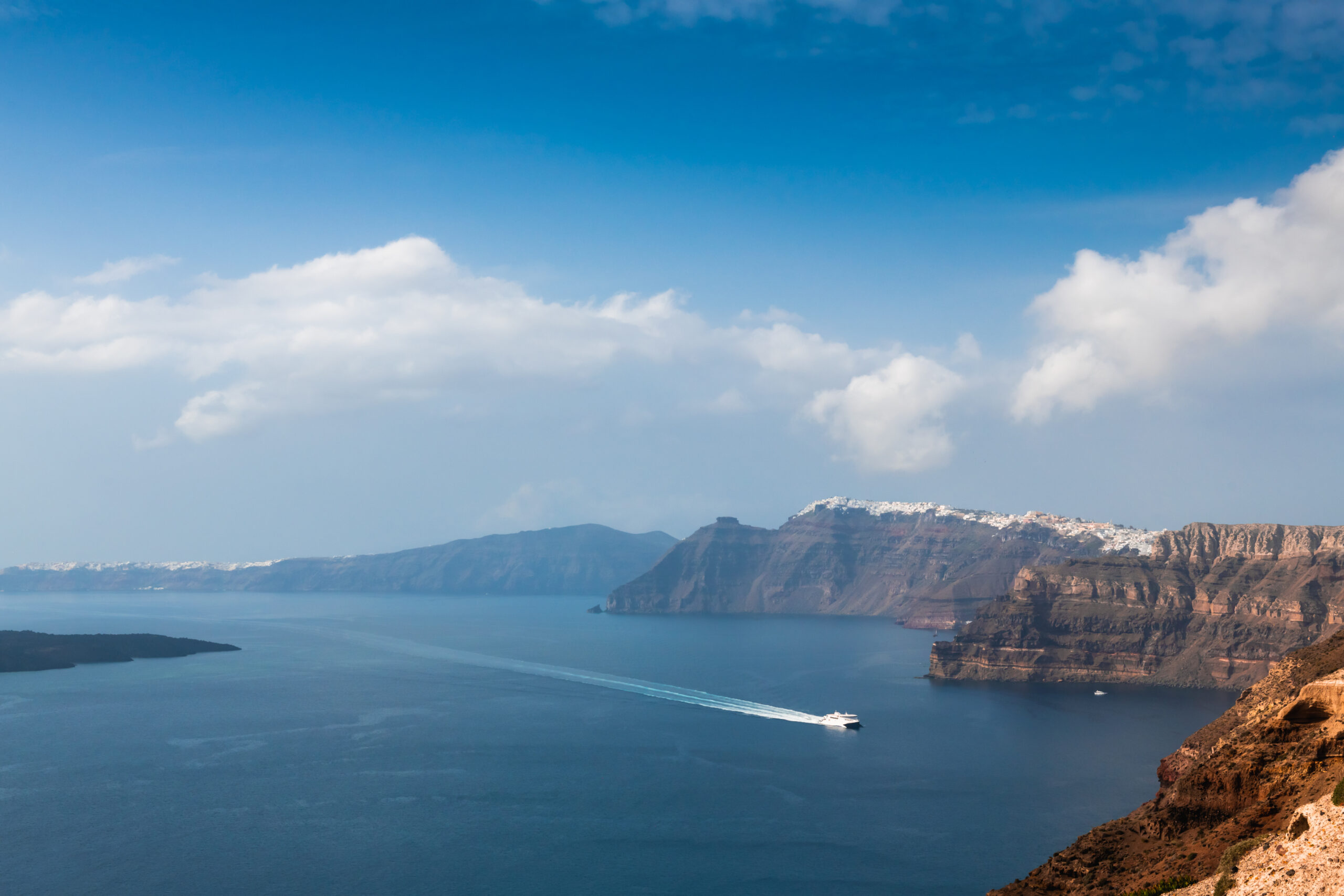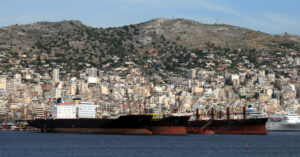
A state of emergency has been declared on the Greek volcanic island of Santorini (Thira) after days of consecutive earthquakes. Thousands of people are fleeing the Greek island, one of Greece’s top tourist destinations, as continued seismic activity rattles the region. According to the Greek Ministry of Maritime Affairs & Insular Policy 7,376 people from February 2-4, including both residents and tourists, have left the island by ferry due to anxiety over frequent tremors.
Due to the state of emergency, ferries operated nine itineraries during that period and transported 7,376 passengers and 1,307 vehicles with final destination the port of Piraeus.
The ferry service has significantly relieved the pressure for the immediate departure of residents and visitors from the island.
The Greek Ministry of Maritime Affairs and Insular Policy assured the public that there is “absolutely no increase” in the ferry ticket prices.
With the approval of the Greek ministry and the assistance of the ferry companies and their crews, two extraordinary itineraries were carried out on February 4, which served, in addition 2,264 passengers and 399 vehicles.
Santorini welcomes millions of tourists annually, but it is currently low season, meaning local residents and workers make up the majority of evacuees.
Two ferry routes from the port of Piraeus to Santorini and vice versa were cancelled on Wednesday due to rough seas.
Seismologists estimate that the high seismic activity could take days or weeks to abate.
A state of emergency was declared on Santorini amid intense and ongoing seismic activity that is rocking the popular island and others in its vicinity.
Authorities have introduced safety measures with the ministry taking also policing measures at the port facilities that were closed because landslide phenomena occurred.
At the same time, it modified the itineraries of the local line Thirasia – Oia Thira, due to the avoidance of access by the local ship to the ports of Ammoudi and Korfo.
Meanwhile, operational units of the Hellenic coast guard were transferred based on the plan and maintain their forces on the islands facing the seismic phenomenon.
Specifically, in addition to the coast guard vessels that operate daily in the four Greek islands (Ios, Amorgos, Thira and Anafi), four other coast guard vessels are on standby in the area.
Also, based on the local emergency plan, twenty-one other vessels are on standby (tugboats, passenger ships, large fishing vessels, and others). At the same time, one coast guard helicopter remains on 24-hour standby at its base.
At the same time, the Ministry of Maritime Affairs and Insular Policy has planned and approved the sea transport of inspectors, teams of scientists, materials, generators and other equipment to the islands facing the problem.



